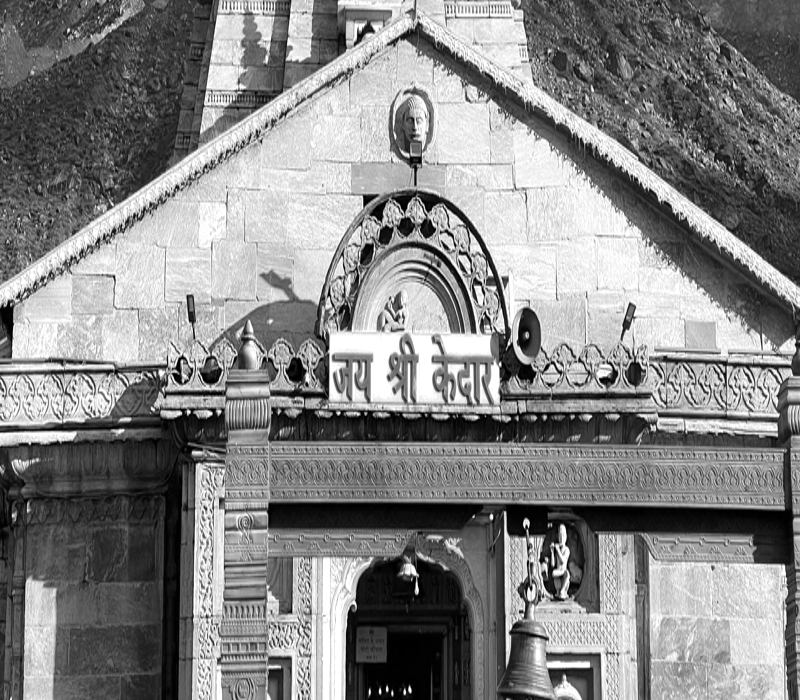- Offices: Dehradun | Dwarka New Delhi
Roopkund Lake, Uttarakhand located at an altitude of approximately 5,029 meters (16,499 feet) in the Chamoli district of Uttarakhand, Roopkund Lake, often called the Skeleton Lake, is one of the most enigmatic destinations in the Indian Himalayas. This glacial lake is surrounded by snow-covered peaks and lush meadows, making it a magnet for trekkers and adventurers. What sets Roopkund apart is its intriguing history, natural beauty, and cultural significance. Here’s an in-depth exploration of Roopkund Lake, including its history, nearby attractions, whether boating is possible, and the best time to visit.
History of Roopkund Lake
Roopkund Lake has long fascinated historians, scientists, and explorers due to the skeletal remains discovered in and around its shores. During the 1940s, a British forest ranger stumbled upon hundreds of skeletons near the lake, earning it the name "Skeleton Lake." Subsequent studies revealed that these remains date back to the 9th century, with evidence suggesting that a group of people, possibly pilgrims, perished here due to a sudden hailstorm.
The mystery deepened with the discovery of additional artefacts, including wooden objects, iron spearheads, leather slippers, and rings. Research indicates that the victims were likely of South Asian origin and were part of a larger group traversing this high-altitude region. DNA studies have further suggested the presence of individuals from different ethnic backgrounds, possibly indicating a pilgrimage or trade journey.
Local folklore also adds a mythological layer to Roopkund's history. It is believed that the lake was formed when Goddess Parvati created it to see her reflection. Additionally, the region is closely associated with the Nanda Devi Raj Jat Yatra, a traditional pilgrimage held every 12 years, during which devotees trek through Roopkund to honour Goddess Nanda Devi.
How to Reach Roopkund Lake
- By Road:
- The journey to Roopkund begins at Kathgodam, the nearest railway station, which is well-connected to major cities like Delhi. From Kathgodam, travelers can take a taxi or bus to Lohajung, the base camp for the Roopkund trek. Lohajung is about 300 kilometers away and offers basic accommodations for trekkers.
- By Trek:
- The trek to Roopkund Lake is one of the most popular in Uttarakhand, spanning approximately 40-50 kilometers round trip.
- The trail begins at Lohajung and passes through scenic villages like Wan, Ghairoli Patal, and Bedni Bugyal, a vast meadow offering stunning views of the Trishul and Nanda Ghunti peaks.
- Another key stop is Ali Bugyal, known for its lush grasslands. The trek becomes more challenging as you ascend to Bhagwabasa and then to Roopkund Lake, crossing rocky terrain and steep inclines.
The trek is moderately difficult and requires good physical fitness, but the rewards are unparalleled views of the Himalayan landscape.
Nearby Attractions
Roopkund Lake is not an isolated gem but part of a region rich in natural and cultural attractions. Here are some notable sites near Roopkund:
- Bedni Bugyal and Ali Bugyal These alpine meadows are among the most beautiful in Uttarakhand. They serve as camping spots during the Roopkund trek and are known for their vibrant wildflowers and panoramic mountain views.
- Junargali Pass Located just above Roopkund Lake, this high-altitude pass offers breathtaking views of the surrounding peaks and glaciers. It’s a challenging extension for seasoned trekkers.
- Nanda Devi Temple (Latu Devta) The region is steeped in the worship of Goddess Nanda Devi. Temples dedicated to her and her consort Latu Devta are located in nearby villages, adding a spiritual dimension to the journey.
- Trishul Peak and Nanda Ghunti These iconic Himalayan peaks dominate the skyline around Roopkund, making them a photographer’s delight. Their imposing presence adds to the mystical aura of the lake.
- Wan Village This quaint village serves as a gateway to the Roopkund trek and offers insights into the local Garhwali culture. The villagers often share fascinating tales and legends about the lake and the surrounding area.
- Kalu Vinayak Temple This ancient temple en route to Roopkund is dedicated to Lord Ganesha. It’s a popular stop for trekkers seeking blessings before continuing their journey.
Best Time to Visit Roopkund Lake
The best time to visit Roopkund Lake is during the trekking season, which is divided into two main windows:
- Summer (May to June)
- Weather: Pleasant with clear skies and daytime temperatures ranging from 10°C to 15°C. Nights are colder but manageable.
- Highlights: The meadows of Bedni Bugyal and Ali Bugyal are lush and vibrant, offering a riot of colors and breathtaking scenery.
- Autumn (September to October)
- Weather: Cool and dry, with temperatures ranging from 5°C to 10°C during the day. Nights can be freezing.
- Highlights: Clear views of snow-capped peaks and a crisp, serene atmosphere. This season is ideal for photography and uninterrupted trekking.
The monsoon season (July to August) is not recommended due to landslides and slippery trails, while winter (November to April) makes the region inaccessible due to heavy snowfall.
Cultural and Mythological Significance
Roopkund Lake holds a special place in the hearts of locals and trekkers alike. The Nanda Devi Raj Jat Yatra, a once-in-12-year pilgrimage, passes through Roopkund and is a grand celebration of the region’s cultural heritage. Devotees believe that the trek honours Goddess Nanda Devi and strengthens their spiritual connection with the divine.
Roopkund Lake is more than just a trekking destination; it is a journey into the heart of the Himalayas, where natural beauty and ancient mysteries intertwine. Whether you are drawn by its fascinating history, the allure of adventure, or the spiritual aura of the place, Roopkund promises an unforgettable experience. Its stunning landscapes, enigmatic tales, and cultural richness make it a must-visit for anyone seeking an offbeat yet profoundly enriching Himalayan adventure.

